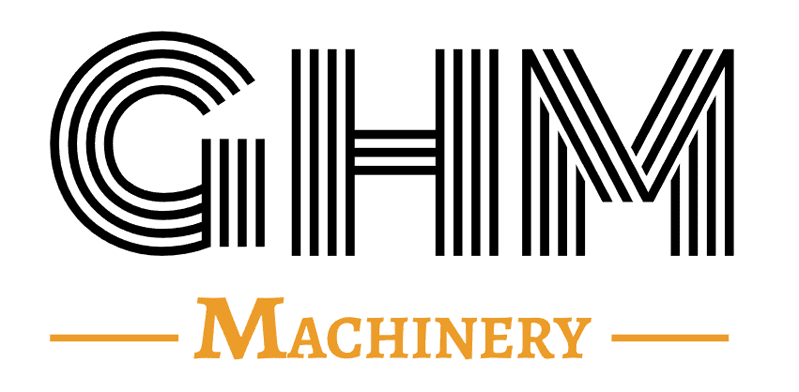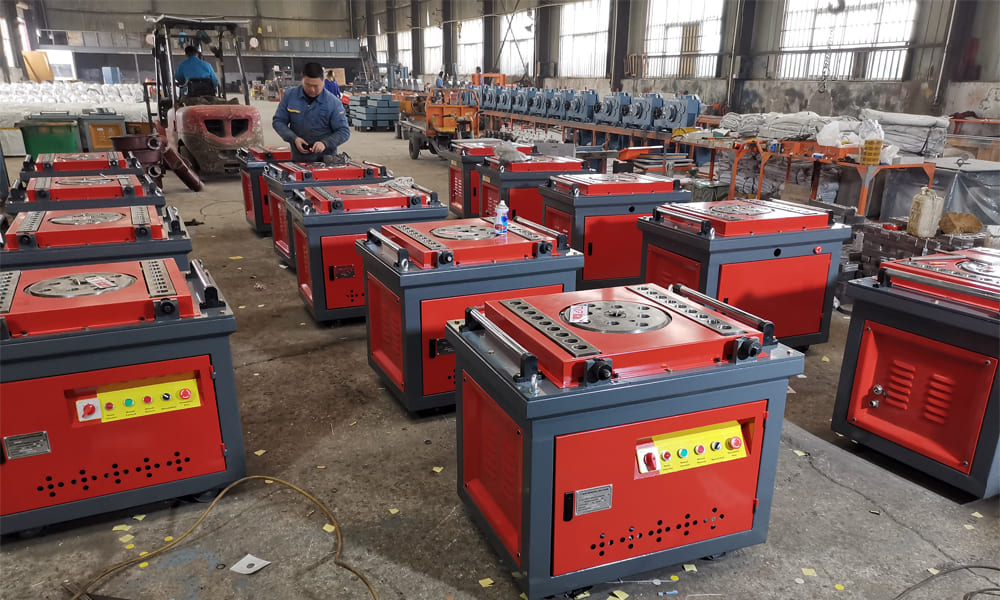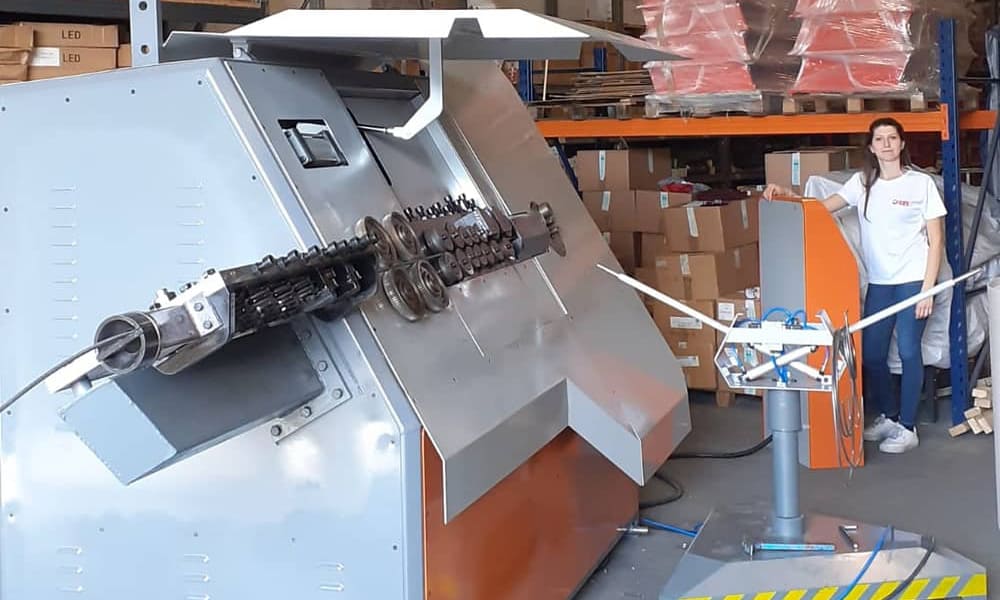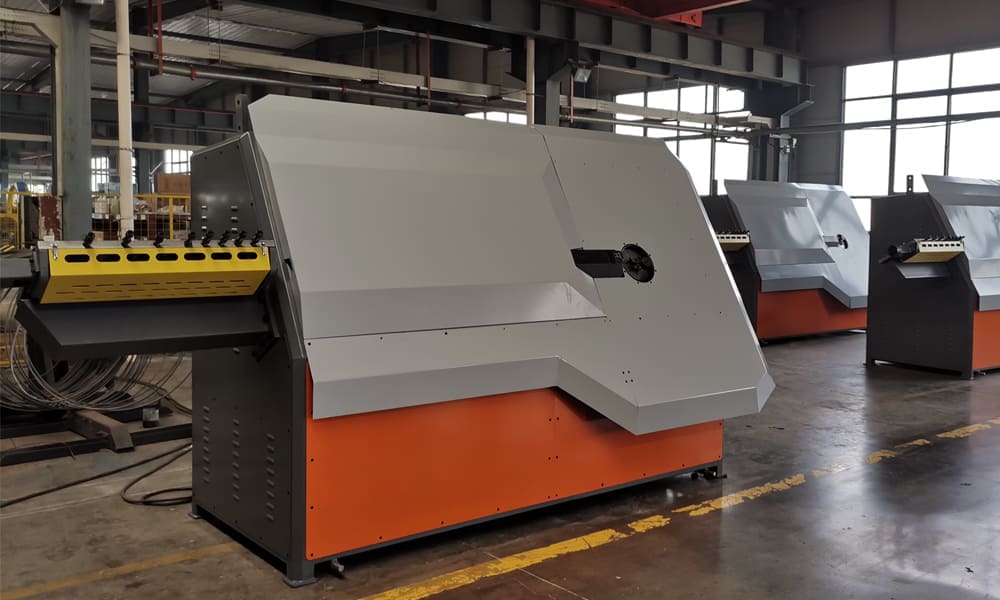Steel Bar Machine:Steel Bar Threading Machine
- Steel Bar Machine:Operator Designation: Assign a dedicated operator for equipment management.
- Safety Procedures: Adhere strictly to safety protocols for tapered thread threading machines.
- Understanding Equipment: Ensure a thorough understanding of the machine’s structure, principles, and performance.
- Focus During Operations: Maintain concentration; avoid laughter or playful behavior while operating the machine.
- Equipment Inspection: Conduct comprehensive inspections of the equipment and electrical systems before use to identify hazards.
- Securing Steel Bars: Clamp the steel bar securely during threading to prevent injuries.
- Cooling Measures: Implement effective cooling and safety measures to prevent splashing of iron filings.
- Cleaning Precautions: Do not clean dust or debris from blades during operation. Halt the machine for inspection and repair if necessary.
- Performance Limits: Avoid operating the machine beyond its specified performance limits.
- Cross Operation Method: Follow the “cross operation method” to ensure machine functionality.
- Maintenance Protocols: Prohibit maintenance and repair work while the machine is in operation.
- Post-Operation Procedures: Power down the machine and lock the gate box after completing work.
Rebar Threading Machine
Steel Bar Machine: Steel Bar Straightening Machine
- Personal Protective Equipment: Wear safety helmets, gloves, and rubber-soled shoes while operating.
- Machine Checks: Verify machine stability, secure installation, and the integrity of all components before use.
- Restricted Access: Limit access within 2 meters of the machine’s sides during operation; install guardrails and safety signs.
- Lifting Techniques: Use proper lifting techniques with two-person cooperation when handling coiled steel.
- Length Limitations: Restrict straightened steel bar length to a maximum of 10 meters per operation.
- Appropriate Equipment: Select suitable straightening blocks and traction wheel grooves based on the steel bar diameter.
- Adjustments: Adjust straightening blocks as needed to ensure proper alignment and offset.
- Length Inspections: Regularly inspect steel bar length after cutting; adjust the length plate or limit switch as necessary.
- Final Straightening Precautions: Use a steel pipe before final straightening to prevent steel bar ejection.
- Safety Checks: Ensure fixed straightening blocks and closed protective covers before starting the machine; implement dust prevention measures during operation.
- Safe Distances: Maintain a safe distance from the traction wheel during operation.
- Temperature Monitoring: Monitor bearing temperature; stop the machine if it exceeds 60℃.
- Personnel Restrictions: Limit access to non-essential personnel near the machine during operation.
- Injury Prevention: Prevent steel bar ends from causing injury as coils are depleted.
- Reporting Protocols: Immediately report any abnormal conditions to the maintenance team; refrain from unauthorized maintenance.
- Post-Operation Procedures: Power down the machine and lock the switch box after operation or in the event of a power outage.
GT6-14 Rebar Straightening and Cutting Machine
Steel Bar Cutting Machine
- Surface Alignment: Ensure the work surface aligns with the cutter; use additional personnel for longer steel bars.
- Cutter Inspections: Inspect the cutter for cracks, tighten blade holder bolts, and secure protective covers before starting.
- Empty Run Check: Conduct an empty run to check transmission and bearings before operation.
- Feeding Technique: Use the middle and lower parts of the cutter to securely feed steel bars; stand beside the fixed blade during operation.
- Material Limitations: Do not cut steel bars exceeding machine specifications; calculate the total cross-sectional area when cutting multiple bars.
- Cutter Replacement: Replace the cutter with a high-hardness type when cutting low-alloy steel.
- Safety Distance: Maintain a safe distance from the blade during short material cutting.
- Debris Removal Precautions: Avoid manual removal of debris during operation; keep non-operating personnel away from swinging steel bars.
- Immediate Action for Abnormal Conditions: Stop the machine immediately if abnormal sounds or conditions arise; power down and report to the maintenance team.
- Hydraulic Oil Checks: Check hydraulic oil levels and motor rotation direction before operating hydraulic cutting machines; release the oil valve and exhaust air from the hydraulic cylinder.
- Manual Hydraulic Settings: Ensure proper valve settings before using manual hydraulic cutting machines; wear insulating gloves during operation.
- Maintenance Procedures: Clean and lubricate the machine; power down after operation.
Italian Model C42 Rebar Cutting Machine
Steel Bar Bending Machine
- Workbench Leveling: Ensure a level workbench and machine table; prepare necessary mandrels and tools.
- Mandrel Installation: Install mandrels and forming shafts according to the steel bar diameter and bending radius requirements.
- Integrity Checks: Verify the integrity and secure installation of mandrels, iron stop shafts, and protective covers before operation.
- Idle Run Confirmation: Conduct an idle run to confirm normal operation before bending steel bars.
- Positioning Steel Bars: Insert steel bar ends into appropriate positions; use assistance for longer bars; avoid unnecessary pushing or pulling.
- Modification Restrictions: Do not alter mandrels, pins, or angles, or perform maintenance during operation.
- Protective Gear: Wear protective glasses when bending rusted or non-cold-drawn steel bars.
- Specification Adherence: Adhere to machine specifications when bending high-strength or low-alloy steel bars.
- Safety Distances: Maintain a safe distance from the machine body during operation; stack bent products securely.
- Diameter Limitations: Do not exceed the maximum diameter specified on the machine nameplate.
- Maintenance and Reversal: Perform maintenance or turntable reversal only after powering down the machine.
- Debris Removal: Clean debris from the turntable and seat holes after operation.
Italian Model P42 Bar Bender





